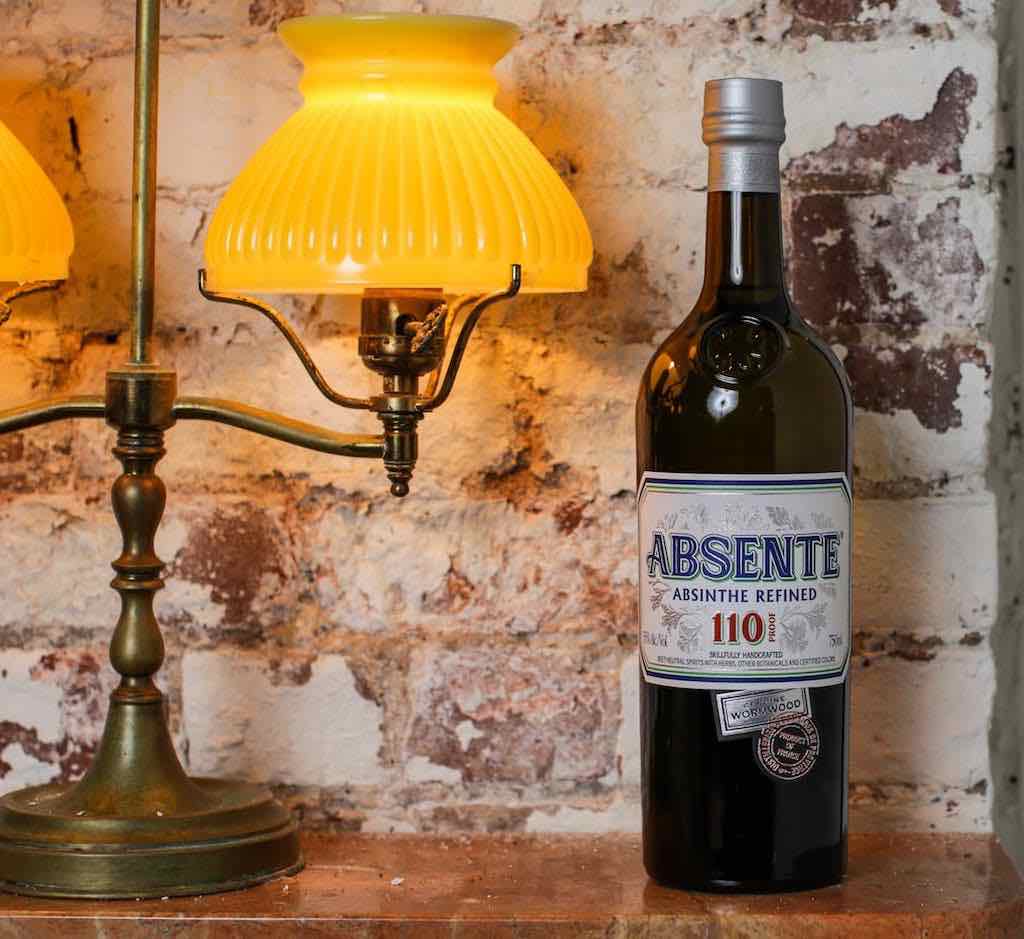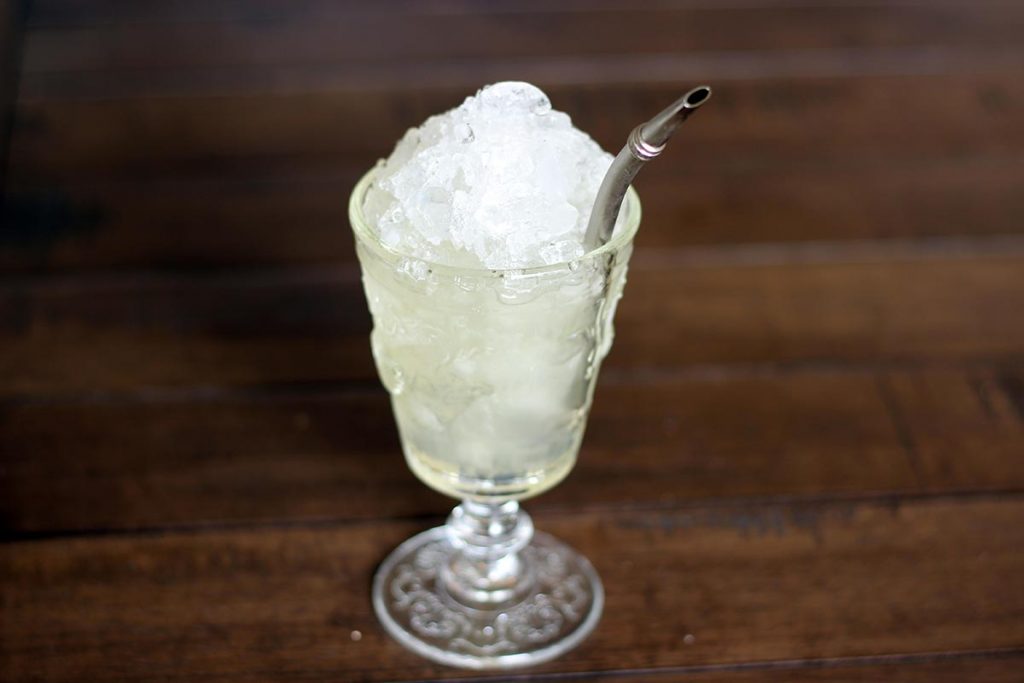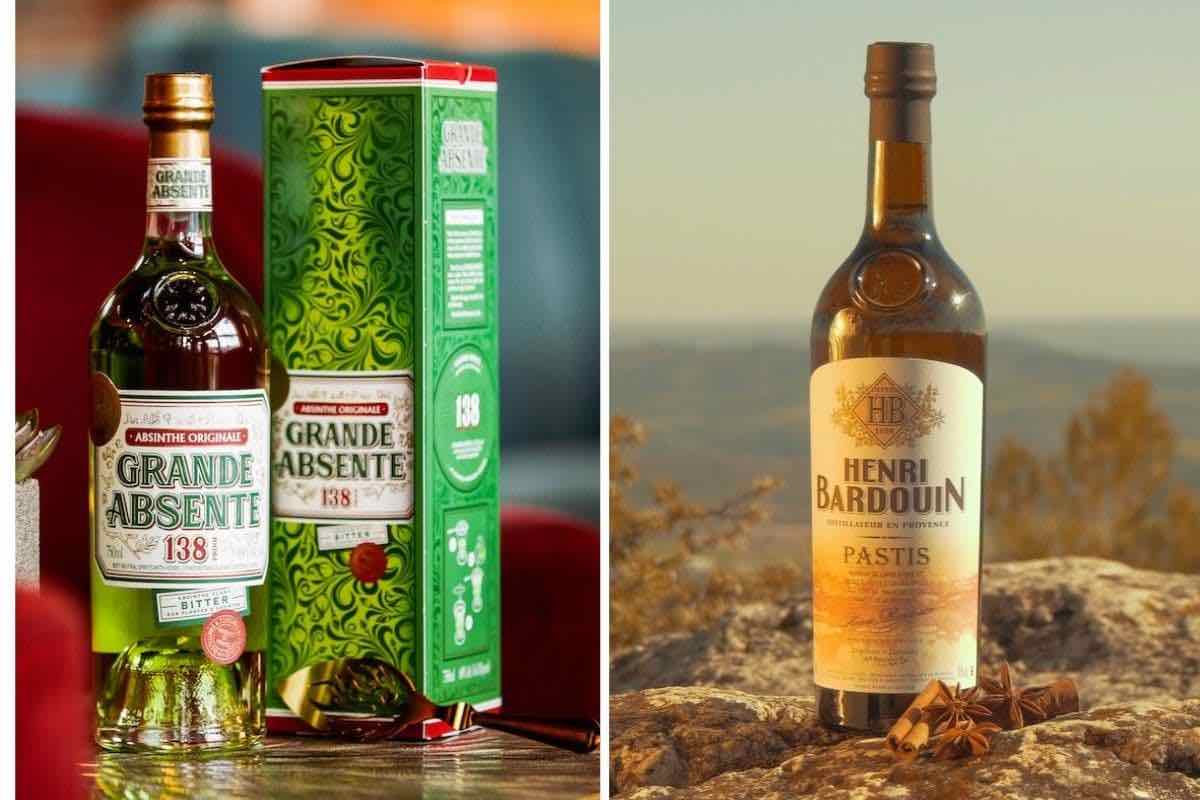Absinthe and pastis. The mention of either conjures visions of struggling artists drowning their sorrows in little cafés by the Seine. While both loom large in the popular imagination (and hazy memories of semesters spent abroad), the average Yank (author included) may have difficulty explaining what exactly sets each anise-flavored spirit apart.
To dispel this mystery, I’ve enlisted the aid of a man uniquely qualified to speak on the subject. Antoine Robert is the co-owner and export manager of France’s century-old Distilleries et Domaines de Provence, which produces some of the best-known examples in each category: Henri Bardouin Pastis, Grand Absente, and Absente Absinthe Refined
Absinthe Basics
Absinthe—which we should qualify right now, does not induce hallucinations—is typically distilled to a higher proof, which can range from 90 to 140 (Grand Absente itself is bottled at 138, and Absente Absinthe Refined clocks in at 110). Robert explains that it should include anise, but it’s wormwood (also called artemisia absinthium) that makes a “true absinthe.”

The herb also gives absinthe its characteristic hue. The color that inspired the nickname “green fairy” is the result of macerating the spirit with roman wormwood following distillation. If this post-distillation step does not take place, the absinthe will be clear.
Surprisingly, Robert says that there are no legal specifications determining what can be labeled absinthe (though he adds that regulations are on the way) but believes that the market plays a role in filtering out imitations.
“The market generally tends to eliminate, or at least marginalize, the ‘absinthes’ that are low proof (90 or below), those where wormwood isn’t prominent, and those that have another color other than green or clear,” he says.
Pastis Basics
The legal definition for pastis is more clear-cut. It must be distilled to 90 proof, made with anise and licorice, and cannot contain wormwood (though it can include the herb’s cousin, mugwort). Its color is typically a yellowish-brown, but it turns a cloudy, milky white when mixed with water.

How to Drink Absinthe
The traditional way to consume absinthe involves pouring two ounces of the spirit into a short glass before placing a slotted absinthe spoon made for this very purpose over the glass’s mouth. Afterward, a sugar cube is positioned above the spoon’s slots and dissolved by pouring three ounces of cold water over the spoon and into the glass. Afterward, the spoon is used to stir the water, absinthe, and dissolved sugar, completing the ritual.
But if you don’t have an absinthe spoon at the ready, Robert adds that you can simply enjoy the spirit with sparkling water, or even a few ice cubes.
How to Drink Pastis
The traditional method for pastis consumption also calls for cold water, though the approach is much more straightforward: simply pour one-part pastis into a glass, and then dilute with five to seven parts water. Doing so also transforms the yellow-brown spirit into what looks like a glass of milk, an effect the author must add is quite magical. According to Robert, ice may be added—but only after the water.
Using Absinthe and Pastis in Cocktails

The history of using absinthe in cocktails is almost as old as the cocktail itself. It’s a key ingredient in the Sazerac, which may still be the most common way American drinkers encounter the spirit. But it is also employed in many other classic cocktails such as the Death in the Afternoon, Turf Cocktail and Absinthe Frappe.
“Absinthe is more versatile than pastis,” Robert says, crediting the bitterness of wormwood. He adds that it’s useful for introducing herbaceous notes into mixed drinks, and pairs well with fruits and any other type of spirit besides cream liqueurs.
By contrast, pastis has a more pronounced aniseed flavor that has a tendency to dominate cocktails: It just doesn’t play as well with others. However, that’s where a couple ounces of cold water and perhaps an ice cube come in.



